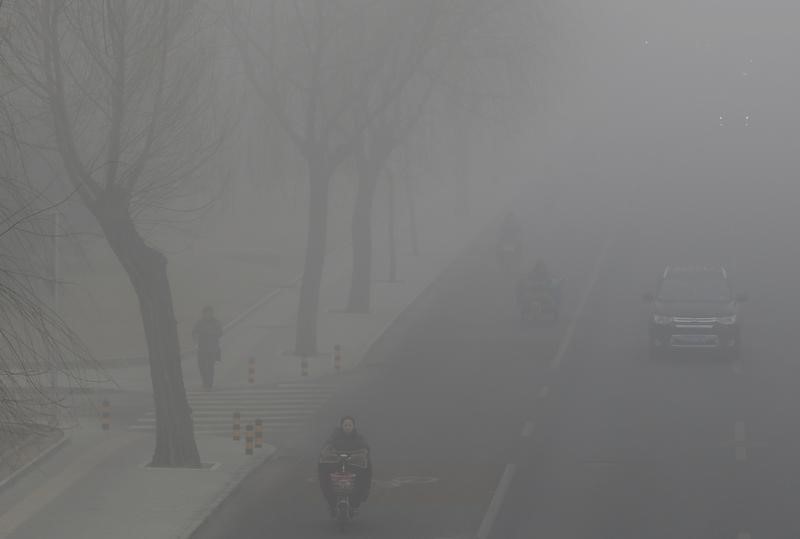Image: People drive and ride amid the smog in Beijing, China, February 14, 2017. REUTERS/Jason Lee
![]()
BEIJING (Reuters) – China still has work to do in cleaning up its skies, with poor enforcement of environmental laws and inadequate monitoring in some places, the environment minister said on Thursday, as the country enters its fourth year of its “war on pollution”.
Minister of Environmental Protection Chen Jining said there had been faster progress in fighting pollution than in developed countries, but China still needed to do more in getting firms and local authorities to toe the line.
Pollution alerts are common in northern China, especially during bitterly cold winters when energy demand, much of it met by coal, soars.
Since the middle of December last year, large parts of northern China have suffered successive bouts of heavy smog that put dozens of cities on “red alert” and raised questions about the government’s anti-pollution efforts.
The environment ministry named and shamed dozens of enterprises and local governments for failing to heed emergency restrictions on industrial output and traffic, but Chen said China was still moving in the right direction.
“If we look at the overall situation we see progress,” Chen said. “That’s not to say that there aren’t places where it is inadequate, especially at the district level, which is the focus of our current work.”
China’s “environmental capacity” was much weaker in winter, he said, adding that measures aimed at resolving winter pollution were now “very clear”, with implementation the key factor.
Chen said on Wednesday that governments at the grassroots level were the “weak link” when it came to implementing environmental laws.
He revealed that 18 inspection teams had already been established to comb the Beijing-Tianjin-Hebei region for evidence of environmental violations during outbreaks of heavy smog.
He said they were focusing on 400 key “hotspots” responsible for about 40 percent of the region’s emissions, and would aim to tackle “scattered” and small-scale polluters, including small coal-fired boilers, in the region.
Hebei, China’s biggest steel producing region and home to six of China’s 10 smoggiest cities last year, has already said that its priority in 2017 would be controlling emissions from “dispersed” coal burning by households and small enterprises.
($1=6.9103 Chinese yuan)
(Reporting by David Stanway and Nick Heath; Editing by Nick Macfie)
Copyright 2017 Thomson Reuters. Click for Restrictions.


